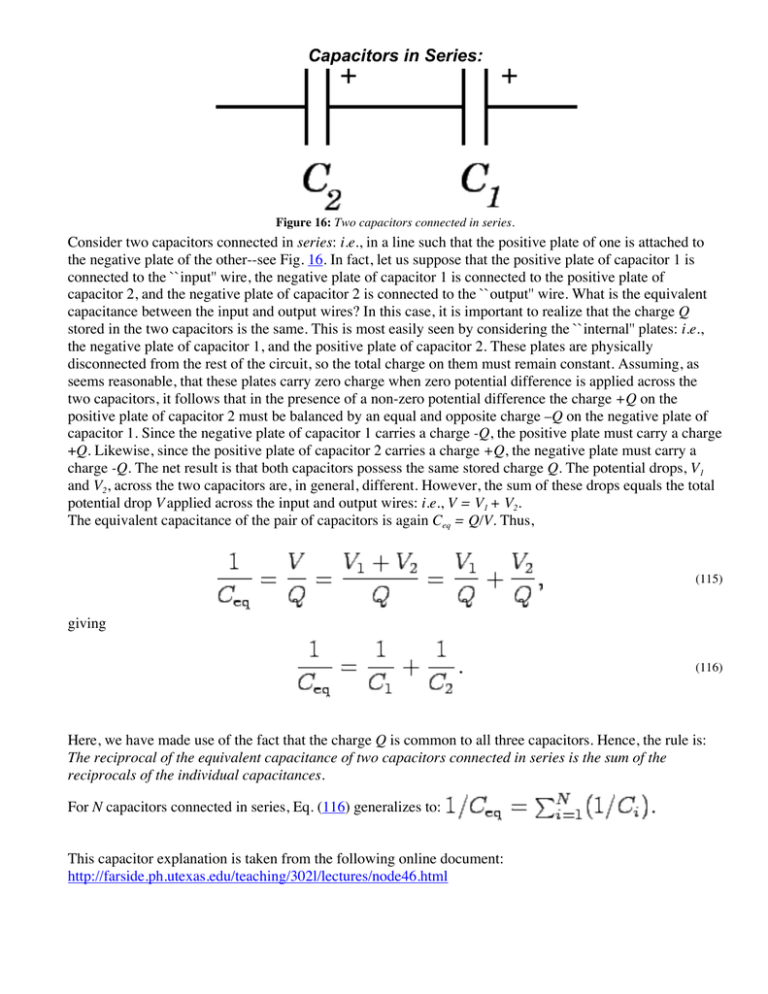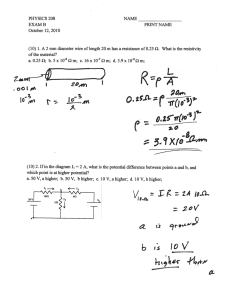Capacitors in Series
advertisement

Capacitors in Series: Figure 16: Two capacitors connected in series. Consider two capacitors connected in series: i.e., in a line such that the positive plate of one is attached to the negative plate of the other--see Fig. 16. In fact, let us suppose that the positive plate of capacitor 1 is connected to the ``input'' wire, the negative plate of capacitor 1 is connected to the positive plate of capacitor 2, and the negative plate of capacitor 2 is connected to the ``output'' wire. What is the equivalent capacitance between the input and output wires? In this case, it is important to realize that the charge Q stored in the two capacitors is the same. This is most easily seen by considering the ``internal'' plates: i.e., the negative plate of capacitor 1, and the positive plate of capacitor 2. These plates are physically disconnected from the rest of the circuit, so the total charge on them must remain constant. Assuming, as seems reasonable, that these plates carry zero charge when zero potential difference is applied across the two capacitors, it follows that in the presence of a non-zero potential difference the charge +Q on the positive plate of capacitor 2 must be balanced by an equal and opposite charge –Q on the negative plate of capacitor 1. Since the negative plate of capacitor 1 carries a charge -Q, the positive plate must carry a charge +Q. Likewise, since the positive plate of capacitor 2 carries a charge +Q, the negative plate must carry a charge -Q. The net result is that both capacitors possess the same stored charge Q. The potential drops, V1 and V2, across the two capacitors are, in general, different. However, the sum of these drops equals the total potential drop V applied across the input and output wires: i.e., V = V1 + V2. The equivalent capacitance of the pair of capacitors is again Ceq = Q/V. Thus, (115) giving (116) Here, we have made use of the fact that the charge Q is common to all three capacitors. Hence, the rule is: The reciprocal of the equivalent capacitance of two capacitors connected in series is the sum of the reciprocals of the individual capacitances. For N capacitors connected in series, Eq. (116) generalizes to: This capacitor explanation is taken from the following online document: http://farside.ph.utexas.edu/teaching/302l/lectures/node46.html



